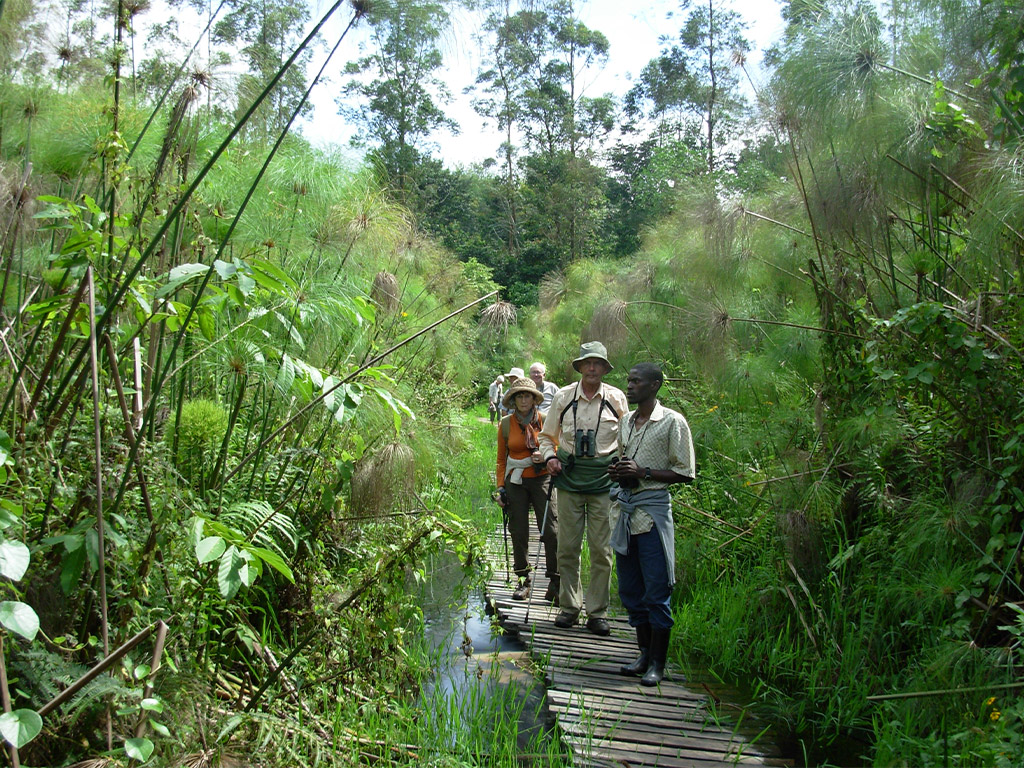
Uganda birding offers a feast of rare and unique bird species, and the chance to improve dramatically on your species life list. More than 1,065 bird species inhabit a range of habitats – from montane forests to wetlands, agricultural lands, lakes and savannahs. Uganda is on the equator, and the endemic species-rich Albertine Rift Valley separates the country’s west from DR Congo and Rwanda, so expect impressive biodiversity.
In no particular order, here are arguably the best birding spots in Uganda:
1. Mabamba Swamp at Lake Victoria
Mabamba Swamp is one of the best places to catch a glimpse of the highly-prized shoebill. Lake Victoria is the largest freshwater body in Africa and is home to about 260 bird species. Look out for the shoebill, blue swallow, pallid harrier, papyrus gonolek, swamp flycatcher, pigmy goose, lesser jacana, white-winged warbler, Viellot’s weaver, grosbeak weaver, palm-nut vulture, black-headed weaver, northern brown-throated weaver, Clarke’s weaver and Carruther’s cisticola.
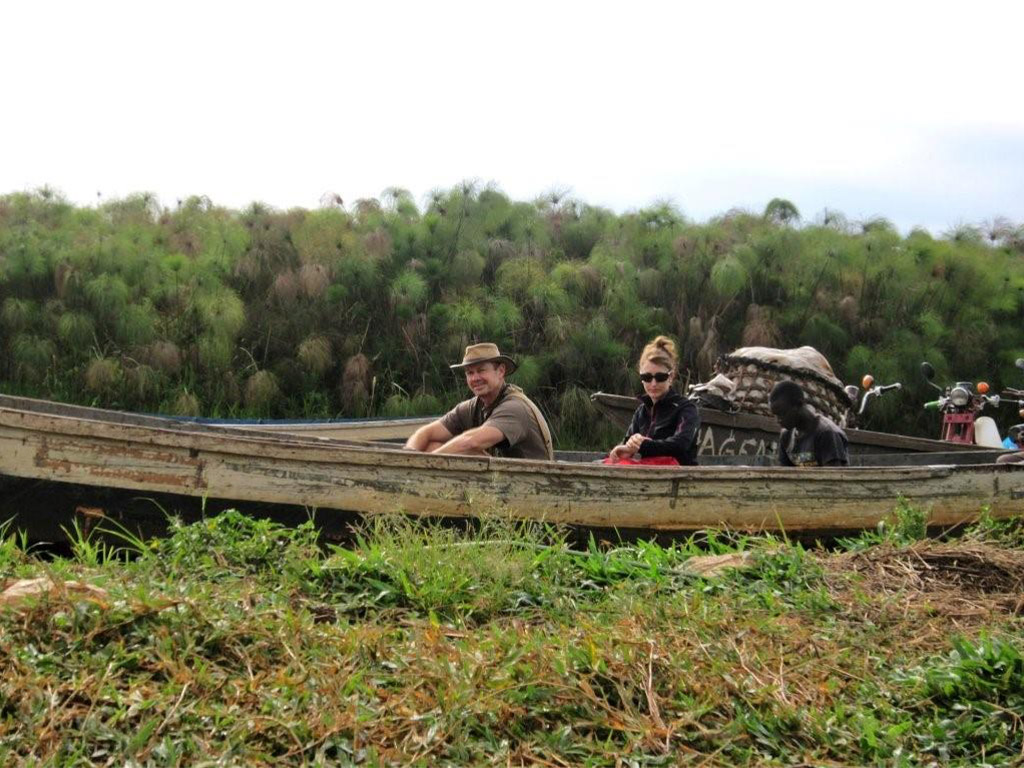
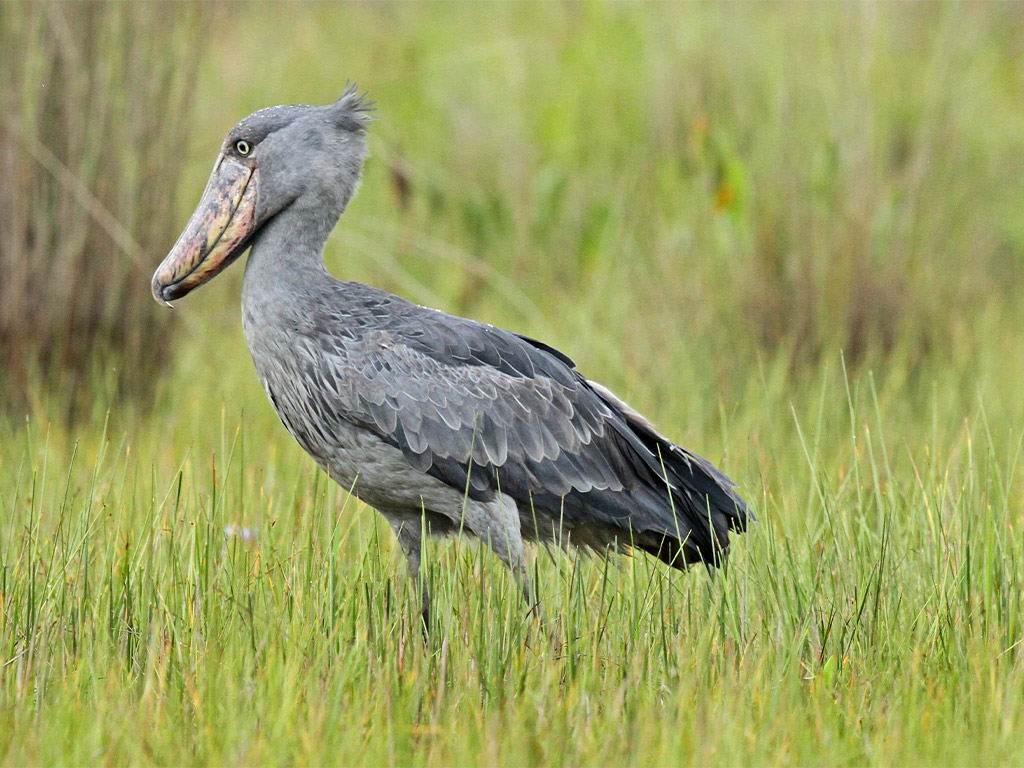
2. Bwindi Impenetrable Forest National Park
Bwindi is the heart and soul of Ugandan birding, the make-and-breaker of bird lists and the home of many endemic and rare bird species. This forested heaven boasts about 350 species, including 23 Albertine Rift endemics of which 14 are not recorded anywhere else in Uganda.
The forest trails around Buhoma are ALIVE with opportunity as you stand your best chance to catch a glimpse of olive long-tailed cuckoo, bar-tailed trogon, dusky tit, Abyssinian (Kivu) groundthrush, white-bellied robin-chat, equatorial akalat, grey-chested iladopsis, red-throated alethe, white-bellied crested flycatcher, white-eyed slaty flycatcher, the enigmatic Chapin’s flycatcher, white-browed crombec, Neumann’s warbler, black-faced prinia, handsome francolin, Jameson’s antpecker, black-faced rufous warbler, northern double-collared sunbird, Willcock’s honeyguide, black bee-eater, black-billed weaver, magpie mannikin and newly described Willard’s sooty boubou.
Scan snags and canopy contours for sooty flycatcher and forest starlings – including Waller’s, Stuhlmann’s and narrow-tailed.
Transitional areas such as “The Neck,’ between Buhoma and Ruhiza are popular areas to look out for black sparrowhawk, western bronze-naped pigeon, cinnamon-chested bee-eater, Cassin’s honeybird, Petit’s cuckooshrike, white-chinned prinia, mountain wagtail, pink-footed puffback, the rare tiny sunbird and the dapper brown-capped weaver.
Away from the indigenous forests, amongst pioneer vegetation fringing the tea estates you can strike it lucky with the highly sought-after dusky twinspot, yellow-bellied, Kandt’s and black-crowned waxbills, streaky and thick-billed seedeaters, western citril and yellow-crowned canary, noisy Chubb’s cisticola, alert Mackinnon’s shrikes, and with luck marvel at a sigh of the striking Doherty’s bushshrike.
Ruhija is your next hotspot in Bwindi, and although the walk down to Mubwindi Swamp is not for the faint-hearted, this is an obligate pilgrimage for the serious birder, since it is down there that resides the MOST coveted of Bwindi’s Albertine Rift endemics …. the rare and localised Grauer’s broadbill, one of Africa’s most sought-after birds. This globally threatened species is only known from two sites in the world, the other being a remote forest in eastern DR Congo.
Other species to watch out for in Ruhija include Carruthers’s cisticola and the localised Grauer’s swamp warbler, red-chested flufftail, black-billed turaco, barred long-tailed cuckoo, white-headed wood-hoopoe, western tinkerbird, olive woodpecker, thick-billed and the elusive dwarf honeyguide, black saw-wing, grey cuckooshrike, olive-breasted and yellow-streaked greenbuls, Abyssinian thrush, white-starred robin, Archer’s ground-robin, stripe-breasted tit, mountain illadopsis, Rwenzori hill-babbler, mountain masked, Rwenzori, and chestnut-throated apalises, cinnamon bracken, mountain yellow, red-faced woodland and Grauer’s warblers, white-tailed blue flycatcher, yellow-eyed black flycatcher, Rwenzori batis, mountain sooty boubou, the rare Lagden’s bushshrike, Sharpe’s starling, mountain oriole, strange weaver, and oriole finch. Flowering symphonias attract the incredible blue-headed, regal and scarce purple-breasted sunbirds, all highly desired Albertine Rift endemics. Dusky, red-faced and the phantom-like Shelley’s crimsonwing occur here too.
As the sun sets, Ruhija offers your best-bet Rwenzori Nightjar, African wood owl, and if you are exceptionally fortunate, the rare Fraser’s eagle-owl.
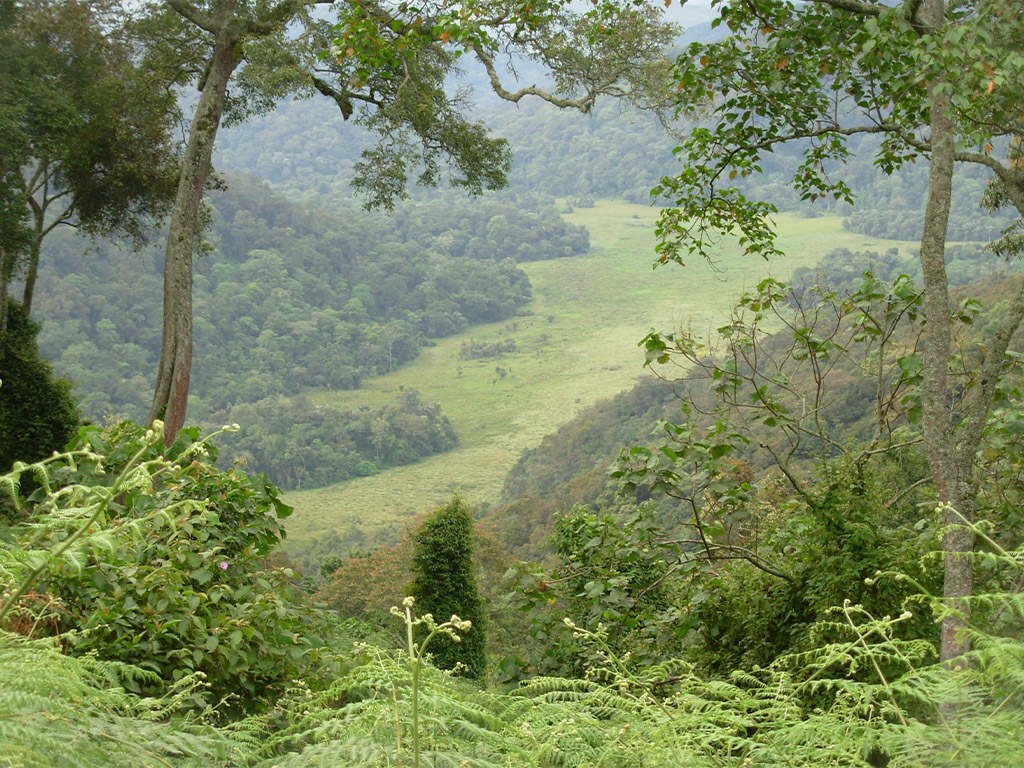

3. Murchison Falls National Park
Murchison Falls is Uganda’s oldest and largest national park, named after the mighty waterfall of the same name – formed as the mighty Nile River is forced through a 7-metre gap in the rocks. The park is home to about 450 bird species, and birding can be done on a game drive, via a boat trip (on the Nile) or a nature walk. Habitat types include forest, swamp, riverine woodland, palm savannah and acacia-dotted plains.
The riverine thickets hold white-crested turaco, double-toothed barbet, red-throated bee-eater, Heuglin’s francolin, brown babbler, silverbird, buff-bellied warbler, black-headed batis, and bar-breasted firefinch. Puvel’s illadopsis can also found near the chimp researchers’ camp. There is plenty of open palm savannah, which is an excellent haunt for Abyssinian ground-hornbill, Senegal lapwing, Shelley’s rufous sparrow and the strange-looking piapiac. The Nile delta is of course home to the near-mythical shoebill stork. Night drives can produce a plethora of species such as pennant-winged and standard-winged nightjar and greyish eagle-owl.

4. Queen Elizabeth National Park
Queen Elizabeth National Park is a birdwatcher’s haven, with about 600 bird species across a variety of habitats – from sprawling savannah to dense forest, lakes and wetlands.
Moving from Ishasha to Mweya you will do well keeping an eye out for African crake, blue-throated roller, flappet lark, sooty chat, black-and-white shrike-flycatcher, northern black flycatcher, black-headed gonolek, moustached grass warbler, red-chested sunbird, and slender-billed weaver. And along the banks of the Kasinga channel, you can expect grey crowned-crane, hamerkop, African jacana, flocks of African skimmer, gull-billed tern, and grey-headed and lesser black-backed gulls.

5. Mgahinga Gorilla National Park
Mgahinga Gorilla National Park is home to about 180 bird species, including some of the spectacular Albertine Rift endemics. It is located in the southern part of Uganda, bordering Rwanda and DR Congo and comprises dense highland forest on the slopes of 3 extinct volcanoes. Mgahinga offers excellent bird viewing opportunities along the gorge trail, bamboo trail and farm/community trail. The bird species to look out for include Kivu ground thrush, handsome francolin, dusky crimsonwing, red-throated alethe, blue-headed coucal, Rwenzori nightjar, Rwenzori batis, Archer’s robin chat, black-headed waxbill, western green tinkerbird and stripe-breasted tit.

6. Semuliki National Park
Semuliki National Park, in the Albertine Rift Valley of western Uganda, has about 440 species in its riverine, forest and grasslands avian habitats. It hosts Guinea-Congo biome species in its lowland forest. The species to look out for include the Congo serpent-eagle, long-tailed hawk, African piculet, Maxwell’s black weaver, blue-billed malimbe, yellow-throated nicator, black dwarf hornbill, Nkulengu rail, piping hornbill, yellow-throated cuckoo, dwarf honeyguide, orange weaver, white-crested hornbill, red-billed dwarf hornbill, black-wattled hornbill, lyre-tailed honeyguide, capuchin babbler and swamp palm bulbul.

7. Kibale National Park
Kibale Forest is a prime birding spot with about 375 bird species, including six Albertine Rift endemics. It is an excellent birding spot with habitats ranging from wet and dry tropical forest to woodland and savannah. The number one sought-after bird in the Kibale Forest is the green-breasted pitta. This “mega” has recently become available, though finding it still takes a good measure of luck.
Kibale offers an impressive bag of goodies replete with gems such as various forest robins, scores of brown and scaly-breasted illadopses, brown-chested alethe, phantom-like black-eared and Abyssinian ground-thrushes, joyful and Toro olive greenbuls, black-bellied seedcracker, collared and black-capped apalis, grey-throated, yellow-spotted and yellow-billed barbets, blue-throated roller, black bee-eater, crowned eagle, red-chested owlet, African grey parrot, African finfoot, afep and white-naped pigeons and the comical, hulking great blue turaco.
The Bigodi Wetland Sanctuary within the park is a great haunt for specials such as speckled tinkerbird, speckle-breasted woodpecker, white-spotted flufftail, snowy-crowned robin-chat, Bocage’s bushshrike, and western nicator. Nearby patches of papyrus support the shy and cautious white-winged swamp-warbler.
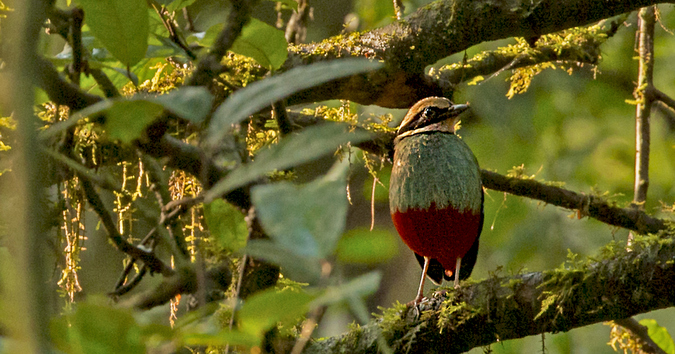
8. Rwenzori Mountains National Park
The Rwenzori Mountains in Uganda are home to about 220 bird species, including 19 Albertine Rift endemics, with habitats ranging from high elevation forest and open montane grasslands, to peat bogs, snowfields and glaciers. The mountains lie in western Uganda, with snowcapped peaks reaching 5,110m. Most of the birding in the forest zone and species to see include Rwenzori turaco, long-eared owl, Archers’ robin-chat, Lagden’s bush-shrike, blue-headed and golden-winged sunbird, white-starred robin, slender-billed starling, cinnamon-chested bee-eater and bearded vulture.
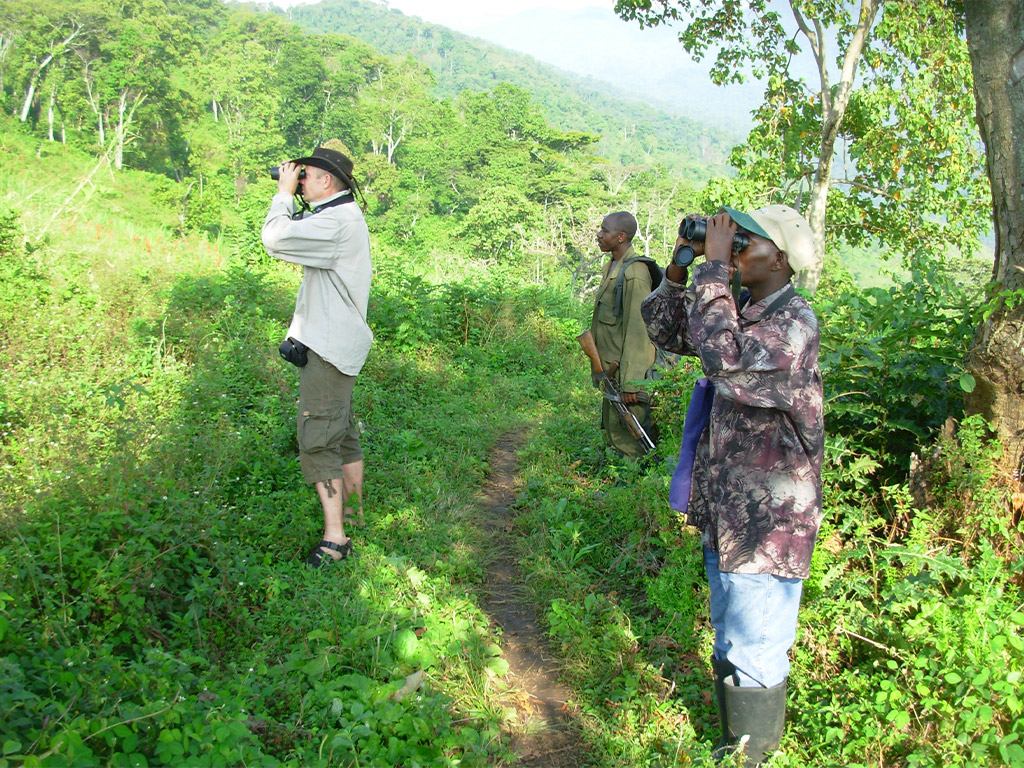
9. Lake Mburo National Park
Birding is one of the major activities in Lake Mburo National Park, and the best spots for birding are near the lake swamps at Warukiri and Rwonyo. Other habitats include dry hillsides, rocky outcrops and dense savannah. The park is home to about 320 bird species, which include red-faced barbet, brown parrot, barefaced go-away bird, black-billed barbet, blue-napped mousebird, Nubian woodpecker, papyrus canary, papyrus gonolek, African finfoot and shoebill.
There are a few very localised species in Uganda that only occur in Mburo, and topping that list are red-faced barbet, Tabora cisticola, green-capped eremomela, golden-tailed woodpecker, spot-flanked barbet, and grey penduline tit.
At the lake swamps, the main targets are African finfoot, papyrus gonolek, white-winged warbler, African water rail and white-backed night-heron. Yellow-throated leaflove chatter loquaciously in dense, waterside thickets and giant kingfishers wait patiently on overhanging branches.
Mixed woodlands are best for Coqui francolin, black-bellied bustard, African wattled plover, brown parrot, red-headed lovebird, barefaced go-away-bird, blue-napped mousebird, lilac-breasted and broad-billed roller, green wood-hoopoe, common scimitarbill, Narina trogon, Nubian woodpecker, trilling cisticola, northern black flycatcher, chin-spot batis, rufous-chested swallow, yellow-throated longclaw and southern red bishop.
Small numbers of the migratory brown-chested plover are regularly observed in the grasslands that access the park, in addition to the impressive Abyssinian ground-hornbill. Night drives may reveal African scops owl, marsh owl, Verreaux’s eagle owl, swamp and pennant-winged nightjars.
10. Budongo Forest
Budongo Forest has two main sections – Kaniyo Pabidi (Murchison Falls National Park), and the Royal Mile and Busingiro areas found south of Murchison. It lies at the edge of the Albertine Rift valley, protecting the most extensive natural forest area in East Africa. Budongo is home to about 360 bird species. At Royal mile look out for the elusive and skulking Nahan’s francolin, the fleeting Cassin’s spinetail, and the dainty chestnut-capped flycatcher. Also search for the stunning chocolate-backed, blue-breasted and African dwarf kingfishers. The forest is full of illadopses and alethes, and the diversity of greenbuls here is simply incredible. But for those who don’t fancy cryptic birds, there are plenty of more colourful species such as the white-thighed hornbill and black bee-eater. Other species include Cassin’s hawk-eagle, Ituri batis, black-collared lovebird and brown twinspot.
For your next Uganda birding adventure, consider these accommodation options at the best prices: private travel & conservation club. If you are not yet a member, see how to JOIN below this story.
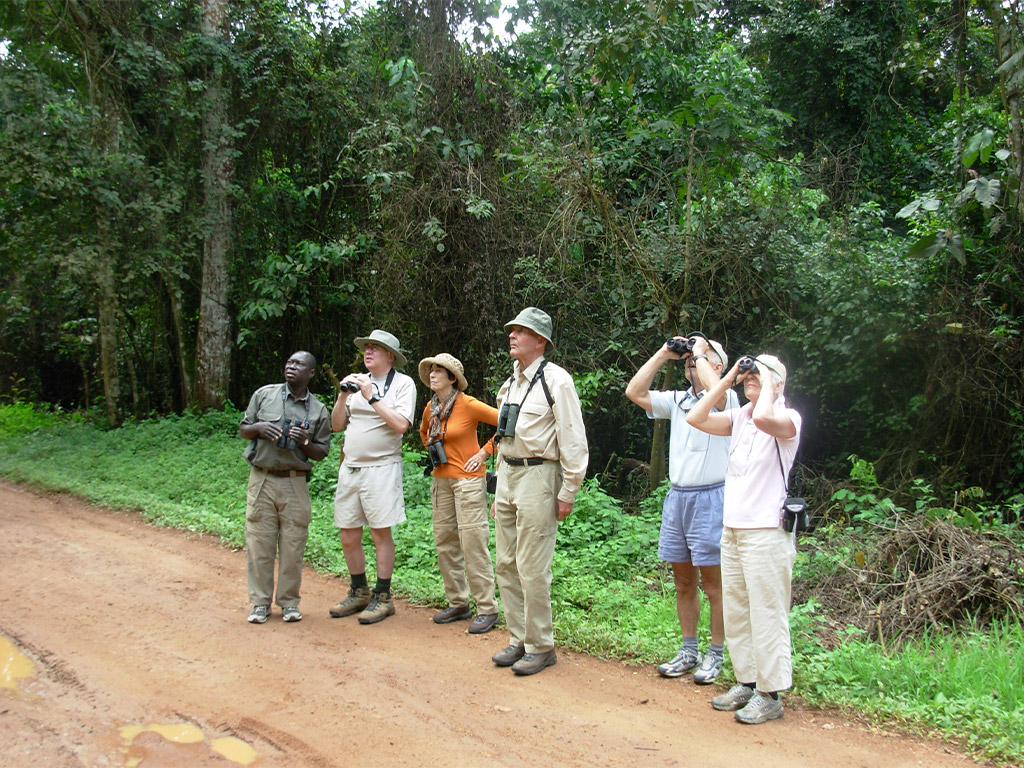
To comment on this story: Login (or sign up) to our app here - it's a troll-free safe place 🙂.![]()






